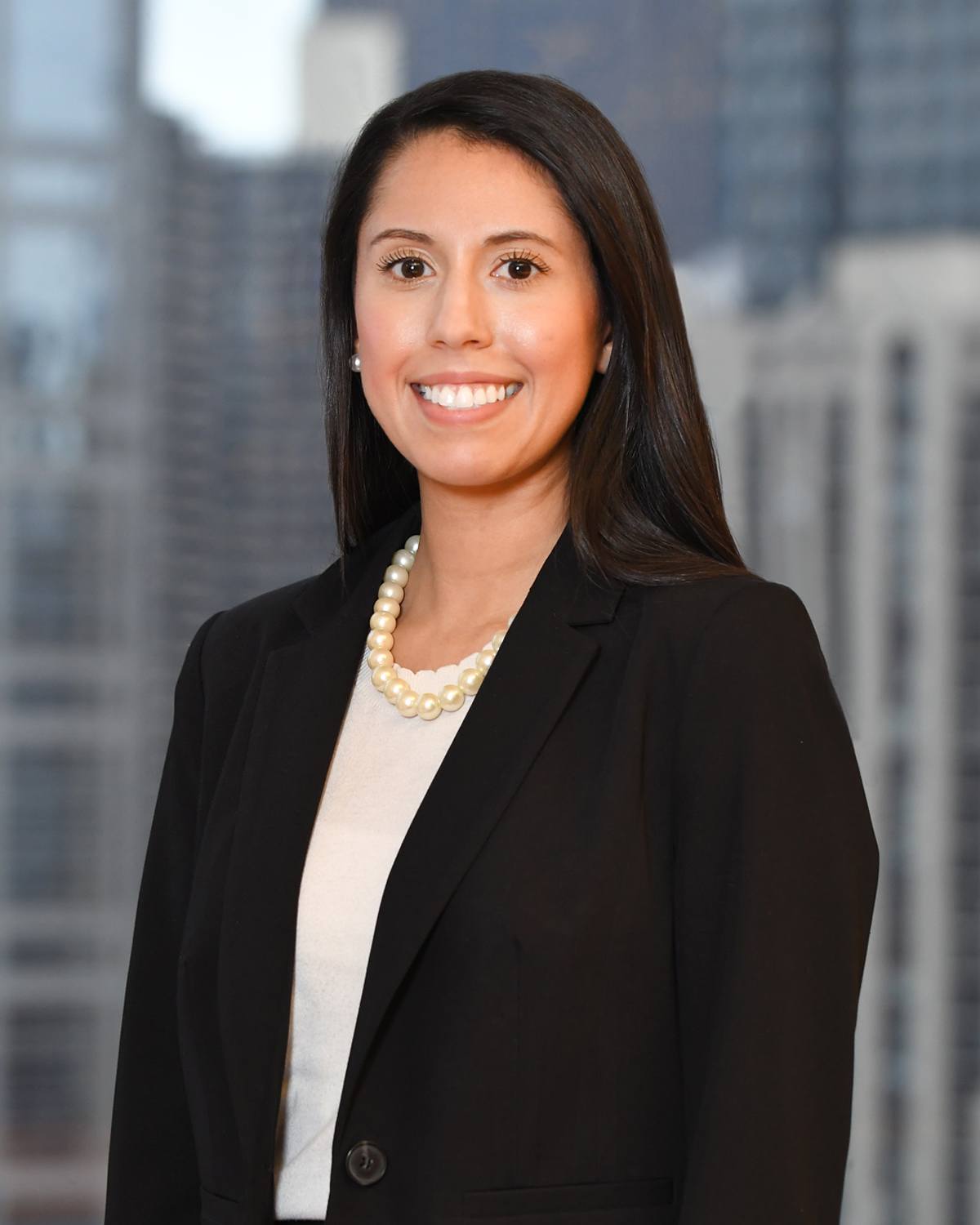- Home »
- Business Bankruptcy »
- Dealing with Corporate Distress 11: How to Protect Your Claim In & Out of Bankruptcy

Dealing with Corporate Distress 11: How to Protect Your Claim In & Out of Bankruptcy
Some General Best Practices
In Installments 9 and 10 of this series, we discuss the differences between types of creditor claims and their respective priorities. In this Installment, we discuss some steps creditors can take to minimize the risk of payment default, both in and out of bankruptcy.
The means by which a creditor protects its claims against a debtor are often dictated by the type of claim the creditor holds. We briefly discuss some of the most common types of claims and some best practices for protecting each of them outside of bankruptcy.
Secured Claims
A secured creditor has a host of rights it can exercise to get paid from the collateral securing its claim if the debtor fails to otherwise pay. To exercise these rights, however, a secured creditor must make sure that its security interest is properly attached and perfected. Secured creditors, a least smart ones, also commonly take additional steps to safeguard themselves. These steps include: having a robust diligence and underwriting process; obtaining trustworthy appraisals of the value of collateral being offered by a debtor; understanding the nature of the collateral being offered and any special circumstances that may impact the secured creditor’s ability to foreclose on and sell it; and obtaining personal guaranties from third parties (often a debtor’s principals or affiliated companies) to provide a separate means of enforcing payment rights. For more information, see Dealing With Defaults Under Article 9 of UCC.
Landlord Claims
Landlords commonly require tenants pay a cash security deposit, against which a landlord can offset in the event of nonpayment. If the tenant files bankruptcy, however, a landlord must obtain court approval before exercising this remedy. Because of this limitation, savvy landlords often require tenants to post an unconditional letter of credit (an “L/C”) which allows a landlord to draw on it irrespective of a tenant’s bankruptcy status, because of the independence principle (i.e., the L/C does not involve any direct dealing with the debtor because an L/C is a direct obligation of the issuing bank, which is a non-debtor third party). Additionally, it is common practice for a landlord to require a non-debtor third party guaranty a tenant’s lease payments. A landlord can, of course, mitigate against the impact of its tenant filing bankruptcy by carefully drafting the lease to include certain favorable provisions, such as clauses that permit the landlord to terminate the lease immediately upon the occurrence of an event of default or limit any applicable cure period for lease defaults.
Trade/Vendor Claims
Claims for outstanding, unpaid accounts receivable are usually unsecured, not entitled to priority, and are usually not guaranteed. So, what can a trade vendor do to minimize its own risk? Good credit underwriting is a start. If a customer is deemed a potential credit risk, employing stricter payment terms is prudent (e.g., COD or CIA). Limiting customer concentrations, using credit insurance, and hiring an excellent credit manager are other examples of best practices for trade creditors.
Protecting Claims Once a Chapter 11 is Filed
Once a debtor files chapter 11, the automatic stay limits further collection activity by all creditors for claims that arose prepetition. So, what can (and should) a creditor do to protect its claim within a chapter 11 case?
Watch the First Days
As we discuss in Installment 8, once a chapter 11 is filed, the debtor will file numerous first day motions with the Bankruptcy Court. Some of these first day motions ask the court to give the debtor authority to continue to take certain actions that the Bankruptcy Code prohibits absent the debtor being given that authority.
Some of the first day motions will include requests for authority to immediately pay certain types of unsecured claims in advance of other unsecured claims, including motions to pay prepetition wages and benefits, sales and use taxes, customer obligations, and other obligations depending on the nature of the debtor’s business. In most cases, the Bankruptcy Court will grant these motions where it is shown that the payment of such claims is critical to maintaining the debtor’s ongoing operations and going concern value.
Creditors should pay particular attention to any first day motion seeking to pay trade vendor claims as “critical vendor” claims. Under a critical vendor motion, a debtor asks the bankruptcy court to give special treatment to its “critical vendors,” i.e., vendors whom the debtor deems so integral to its ongoing business and reorganization efforts that their prepetition claims must be allowed and paid immediately, to ensure there are no postpetition service interruptions by these vendors. Critical vendor motions are key for at least two reasons: (1) as an unsecured creditor, being on the debtor’s critical vendor list means you’ll be paid sooner than later if the motion is granted;1 and (2) by paying critical vendors in full on account of their claims, other classes of creditors may receive less from the debtor’s bankruptcy than they would have otherwise.
Other common first day motions include requests for authority to allow the debtor to (a) use cash collateral; and (b) obtain DIP financing. When approved, first day orders granting these requests may have a significant impact on the bankruptcy priority scheme, because these orders typically involve priming and replacement liens, intricate debt service requirements, and carveouts for specific types of claims, as we discuss in Installment 15 of this series.
Creditors (and their professionals) should read a debtor’s first day motions carefully to consider the potential impacts on their rights if a first day motion is granted. If appropriate, a creditor should file an objection to any first day motion it believes unfairly prejudices its rights (and if there isn’t enough time to file something, the creditor should show up at the hearing on the first day motions to object in open court). If you don’t protect your rights in time, you may find that the game is already halfway over just after it starts.
Keep Watching
Debtors are required to give notice to all of their creditors that they have filed for chapter 11. But after this initial notice is given to all creditors, there are very few instances in which a debtor is required to notify all parties of specific activities within the chapter 11. It is therefore incumbent on individual creditors to independently monitor case activities and any relevant deadlines that may arise during the case. One way to stay in the loop is to file and serve a request pursuant to Bankruptcy Rule 2002 to be added to the service list and receive copies of all filings in the chapter 11 case. And while this may open a floodgate of mail (or email, since most courts now allow for electronic service of documents), it is traditionally the best way to monitor a case.
Other Sources of Information
Another good source of information is the U.S. Trustee. In many cases, the U.S. Trustee will be briefed by the debtor in advance of its chapter 11 filing regarding the first day motions and general intentions for the chapter 11 case. As the ‘watchdog’ for the debtor’s creditors, the U.S. Trustee is often helpful in providing information to creditors that might otherwise be difficult to decipher from court filings. This is important because, in most cases, many of the first day motions will already have been heard before a creditor has an opportunity to file and serve out its Rule 2002 request for notice.
Not long after the case begins, there will also be an opportunity to meet with an attorney for the U.S. Trustee at the initial meeting of creditors. At this meeting, the U.S. Trustee will provide general details regarding the chapter 11 process and the debtor’s particular case, and invite questions from creditors and other parties in attendance at the meeting. The debtor’s counsel will also be on hand at these meetings to provide a case status summary and answer questions, and a representative of the debtor will appear at this meeting to give testimony under oath.
During the chapter 11 case, the debtor is required to make periodic filings regarding its financial status, both as of the petition date, and throughout the chapter 11 case. Among these are the debtor’s schedule of assets and liabilities, and statement of financial affairs. These filings can provide an initial idea as to the debtor’s position regarding a particular creditor’s claims—the amount the debtor thinks it owes, whether it disputes the claim, etc. It will also list the debtor’s assets, secured and unsecured debts, contracts to which the debtor is a party, and lots of other information.
Two Key Deadlines Creditors Cannot Afford to Miss
At some point during the case, a deadline will be set by the bankruptcy court, by which creditors must file proof of their claims against the debtor’s bankruptcy estate. This deadline, typically referred to as a “claims bar date,” or “bar date,” is one of the most critical from the perspective of a creditor. As we state above, the debtor must file schedules showing the debtor’s assessment of what it owes creditors, the nature and classification of the claims held against it, and whether the claim is contingent, unliquidated, or disputed by the debtor. In some cases, a creditor’s claim may not be listed at all, may be misclassified, or may be in the wrong amount.
In chapter 11, if a creditor agrees with how the debtor has listed its claim in its bankruptcy schedules, it doesn’t have to file a proof of claim. But if there is any reason to disagree with how a claim has been listed, a creditor should proactively file a “proof of claim,” with the bankruptcy court documenting the nature and amounts of its claim against the debtor. The bankruptcy courts have adopted a uniform proof of claim form, which you can find here. In some instances, creditors may want to submit attachments or addenda to their proofs of claim as additional support for the amounts they are claiming to be owed by the debtor, or substantiating the nature or classification of the claim. It’s imperative that creditors be aware of claims bar dates established in a case, because missing a bar date can cause a claim to be disallowed (meaning the claim is never going to be paid) in a chapter 11 case, or subordinated (meaning the claim is kicked down to the bottom of the priority tower) in a chapter 7 case.
Can/Should You Sit on a Committee?
After a chapter 11 filing and before the meeting of creditors is held, the U.S. Trustee will solicit interest from creditors and hold a meeting to form an official committee of unsecured creditors. At the meeting to form the committee, the U.S. Trustee will usually select candidates from the list of the 20 largest unsecured creditors filed by the debtor at the outset of the case to serve, provided enough interest is expressed to form a committee.
Once formed, the committee can engage legal counsel and other professionals, such as a financial advisor, to assist it in carrying out its duties in the chapter 11 case. And since professional fees and expenses for committee professionals are paid by the chapter 11 estate, serving on a committee is a cost-effective way for individual unsecured creditors to influence the outcome of a chapter 11 case and protect their interests (while acting in the interests of all of the debtor’s unsecured creditors). The committee has standing to be heard on any issue in the bankruptcy case, and its views tend to be taken seriously by the bankruptcy court.
Serving on a committee does carry some measure of burden, of course. The committee is charged with monitoring and scrutinizing the debtor’s chapter 11 process from start to finish. These obligations often involve numerous meetings, conference calls, and negotiations. The process can be time consuming, especially if the chapter 11 drags on for months or years. Committee members also owe fiduciary duties to all unsecured creditors, not just those creditors with similarly situated interests. This responsibility can be particularly vexing when a committee member is required to balance its own self-interests with the competing interests of other creditors.
A committee member may also be restricted in trading in the debtor’s securities. Consequently, like any other financial decision, deciding whether to serve on a committee should be carefully considered and determined by weighing both its costs and the benefits.
Other Concepts You Need to Know About
Before we move on, there are some additional concepts creditors must be familiar with when seeking to protect their claims, including:
1) Read the Plan & Disclosure Statement
Generally speaking, once the dust has settled after the first days of a chapter 11 case, unsecured claims will not be paid until the debtor submits (and the bankruptcy court approves) a chapter 11 plan, which will set forth the timing and terms by which claims will be paid. Outside of a subchapter V (“Sub-V”) or small business case, the time period in which a plan is filed and approved varies widely from case to case in chapter 11.
In the case of a Sub-V case, a debtor must file its a plan within 90 days of the petition date, unless it can show the bankruptcy court that this period needs to be extended because of circumstances outside the debtor’s control. See 11 U.S.C. § 1189(b). In addition, a Sub-V debtor need not submit a disclosure statement in conjunction with its plan. See id. at § 1190(1).
Regardless of timing, it is nevertheless important for creditors to review a debtor’s proposed plan and accompanying disclosure statement (where applicable), vote for or against the plan (if given the right to vote), and timely raise any objections to the plan if it has them.
2) Sell Your Claim if the Price is Right
Impatient creditors may not want to sit on the sidelines waiting to see when and whether they’ll be paid under a debtor’s plan. In some instances, to a “claim trader,” willing to purchase the claim immediately from the creditor at an agreed-to discount, allowing the claim trader to step into the shoes of the creditor whose claim it acquired when distributions are eventually made under the plan.
3) Watch Your Back—You May Be a Litigation Target
Even though creditors hold claims against a chapter 11 debtor, that doesn’t mean that a creditor’s only job in a bankruptcy case is to monitor the case and ensure that its claim is paid in the highest amount possible. Creditors may also be sued by the debtor or some other representative of the debtor’s bankruptcy estate later in the case (even after plan confirmation) because chapter 5 of the Bankruptcy Code grants a debtor the right to avoid and ‘clawback’ money or other property from non-debtor third parties.
Thus, creditors (particularly unsecured creditors) may be potential litigation targets in chapter 11. For now, know this: if a debtor transferred something of value to you (e.g., cash, wire transfer, real estate deed) before a bankruptcy filing, the debtor may seek to avoid the transfer and recover the property transferred to you as a “preference” under § 547 of the Bankruptcy Code, or as a “fraudulent transfer” under § 548 of the Bankruptcy Code.
4) Remember the Sunk Cost Fallacy—Avoid Throwing Good Money After Bad
As a creditor, it’s important to keep things in perspective. If a debtor is in payment default and files for bankruptcy, understanding how much it will cost to fully protect a claim in chapter 11 has to be considered. Litigating claims in bankruptcy can be a very expensive process.2 This means that, in all likelihood, a small unsecured claim of just a few thousand dollars is probably not worth the time and expense of doing much more than attending a meeting of creditors, and reviewing the debtor’s bankruptcy schedules to determine whether to file a proof of claim. On the other hand, a creditor holding a claim for hundreds of thousands of dollars may want to exercise every right it has to protect itself and its claim so that it maximizes any distributions it is entitled to under the debtor’s plan.
5) Be Aware of Other Potential Rights You May Hold
Of course, there are additional rights and remedies available to creditors that may help mitigate the disruptive effect a chapter 11 filing will have on its own operations. Section 546 of the Bankruptcy Code, for example, provides creditors specific reclamation rights to creditors who sold goods to a debtor while the debtor was insolvent during the 45-day window immediately preceding the chapter 11 filing. See 11 U.S.C. § 546(c). Section 503(b)(9) grants administrative priority rights to creditor claims that arise out of the value of goods delivered to the debtor in the ordinary course of business during the 20-day window leading up to a chapter 11 filing. See 11 U.S.C. § 503(b)(9). Additionally, § 553 generally allows a creditor to set off a mutual prepetition debt and claim it owes to and holds against the debtor, subject to satisfaction of certain conditions. 11 U.S.C. § 553. The Bankruptcy Code treats creditors with valid setoff rights as secured creditors, regardless of whether or not the obligation giving rise to the setoff rights was secured (§ 506(a)), and thereby entitled to adequate protection.
As you now hopefully see, vigilance is key to both minimizing risk and protecting claims both outside and inside chapter 11 for creditors. By taking the steps necessary to manage these issues, however, creditors can save themselves at least some of the challenges presented for dealing with debtors in distressed and insolvent situations.
[Editors’ Note: This article, while written to be read and understood on a standalone basis, is part of a series. To read Installment 1, which includes a table of contents and links to every article in the series, click here.
The authors are corporate restructuring and insolvency attorneys. Read more about three of them at the end of Installment 1.
Understanding all this stuff in the context of bankruptcy is important, but not every distressed company winds up in bankruptcy. So, you also need to understand how it works outside of bankruptcy. Read Installment 12 to read the rest of the story.
To learn more about this and related topics, you may want to attend the following on-demand webinars (which you can listen to at your leisure and each includes a comprehensive customer PowerPoint about the topic):
- The Nuts & Bolts of a Chapter 11 Plan
- The Intersection of Bankruptcy and…Labor/Employment Law
- The Intersection of Bankruptcy and… Tax Law]
©2022. DailyDACTM, LLC d/b/a/ Financial PoiseTM. This article is subject to the disclaimers found here.
- Creditors who are not included on a debtor’s list of critical vendors and believe they have a good case for being treated as “critical” may want to lobby the debtor to be included after the fact.
- Landlords, for example, may be able to reduce claim litigation costs by strategically timing when to file certain motions to advance their interests. Absent a true emergency, and because motion practice is expensive, a landlord may be well-advised to wait to take action until after the first 60 days of a debtor-tenant’s filing, because the court can extend a debtor’s time to perform its lease obligations for the first 60 days of a case under § 365(d)(3).
About Jonathan Friedland
Jonathan Friedland is a principal at Much Shelist. He is ranked AV® Preeminent™ by Martindale.com, has been repeatedly recognized as a “SuperLawyer” by Leading Lawyers Magazine, is rated 10/10 by AVVO, and has received numerous other accolades. He has been profiled, interviewed, and/or quoted in publications such as Buyouts Magazine; Smart Business Magazine; The M&A…

About Jack O'Connor
Jack is a corporate and restructuring partner at Levenfeld Pearlstein. Jack’s practice covers a range of healthy and distressed business engagements. He is widely recognized for his excellent work as a restructuring attorney including recognition by various organizations for his strategic thinking and tactical expertise, including SuperLawyers Magazine, Leading Lawyers Magazine, and the Turnaround Management…

About Hajar Jouglaf
Hajar is an associate with Much Shelist in both its Business Transactions Group and its Restructuring & Insolvency Group.

Related Articles
PUBLIC NOTICE OF ASSIGNEE’S SALE: AUCTION OF ASSETS OF CHICAGO WICKER & TRADING CO.
The Chief Restructuring Officer: Architect, Leader, & Change Agent
Kuney’s Corner – Cram Down: When the Creditor Says “No”
Opening the Kimono: Operational and Financial Reporting Obligations at the Outset of a Chapter 11 Case
90 Second Lesson: When a Seller of Real Property Files for Bankruptcy Before Closing
Subchapter V of Chapter 11: A User’s Guide
Session expired
Please log in again. The login page will open in a new tab. After logging in you can close it and return to this page.
